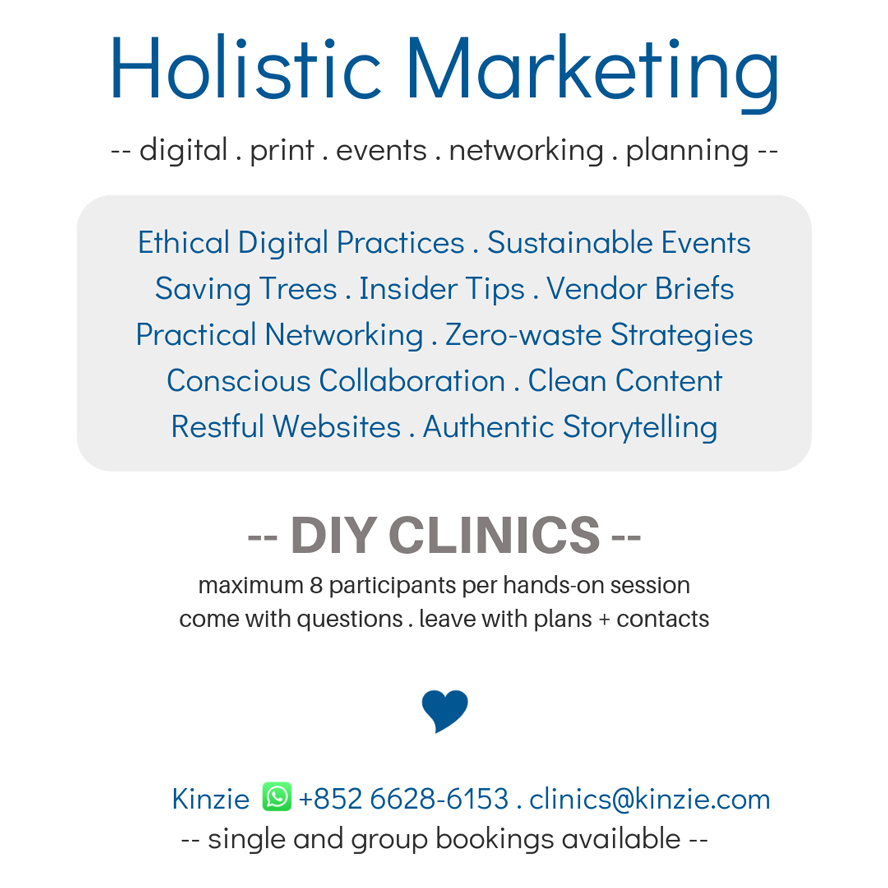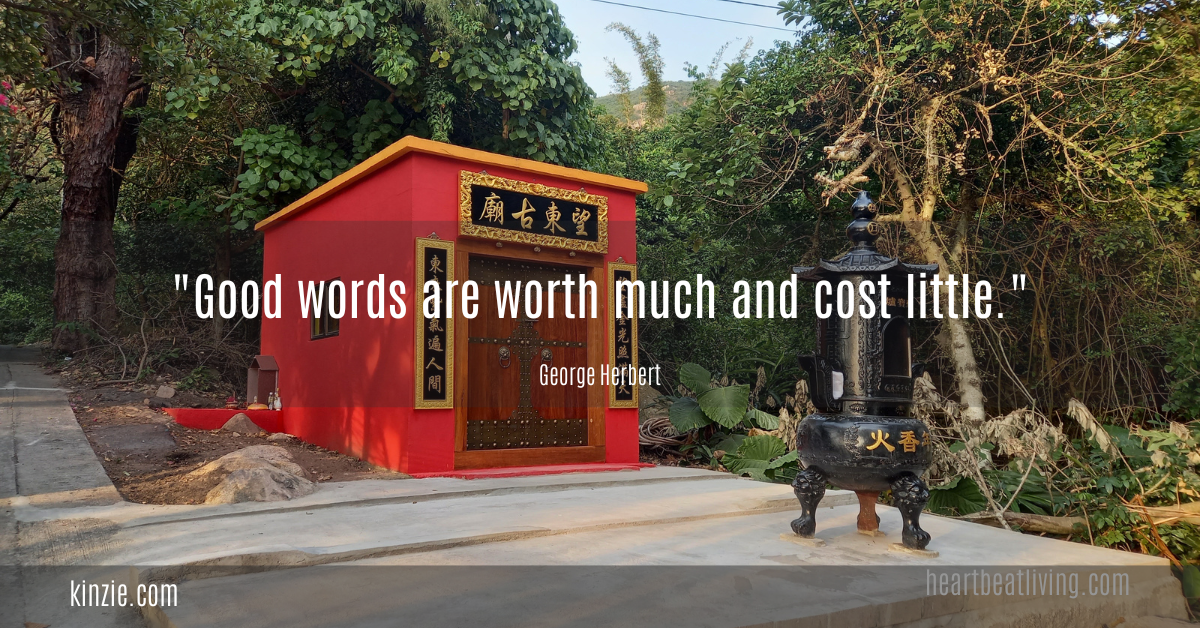Make your life easier — get professional support when you need it.
Holistic = everything is connected
Book a block of time to conduct a review or launch a project, create original, practical solutions and access a network unlike any other … naturally.
Professional services are available on contract with flexible terms and the option to work remotely or on-site, depending on how much time you need and how long your project will take.
Once we have reviewed your situation and crafted a plan, we can move forward with your own crew in-house or build a team from my broad network of specialists and tackle your project full on with a bespoke strategy unique to your requirements and, most importantly, your budget and available resources.

Professional Status (Resume)
Hong Kong Permanent Resident — available on contract
Projects
✓ Establish a communications department for your new business
✓ Review marketing plans, update materials and upgrade programs
✓ Develop your social media strategy and set up business profiles
✓ Create a new website with hosting, email and initial content
✓ Produce engaging content for marketing and publicity
✓ Support your team with media training
Profile
⋆ Media and communications specialist with BSc (Consumer Studies)
⋆ Senior manager with private and public organizations in Canada and Hong Kong
⋆ Holistic business entrepreneur and founder of HK heartbeat community network
⋆ Integrated traditional and digital marketing communications specialist
⋆ Media professional with international clients, agencies and operators
⋆ Wellness industry local market pioneer with international contacts
⋆ Event planner, host and collaborator
Specialist Areas
Strategic Social Media, Community Building, Content Marketing, Digital/Email Marketing, Website Design, Corporate Communications, Media Relations, Publicity, Sponsorship, Business Development, Executive Recruitment, Sales, Promotions, Media Plans, Social Media Strategies, Event Management, Training/Workshops, Presentations, Publication Design, Document Design/Editing, Writing, Publishing
Industries
Media Production, Telecommunications, Broadcasting, Finance, Education, Logistics, Food & Beverage, Trade Publishing, Internet Start-up, Public Relations, Outdoor Media, Retail / FMCG, Youth Leadership, Professional Theatre, Gifts & Premiums, Health & Wellness, Natural Products, Fashion Jewelry, Corporate Training, Public Sector, Event Management
Services
Writing & Editing (eg, News Releases, Websites, Newsletters, Brochures, Reports)
Marketing & Promotions (eg, Marketing Plans, Business Development Strategies)
Customized Training & Workshops (eg, Social Media, Content Management, Sustainability)
Events (ie, Product Launch, Media Conference, Presentations, Seminars)
Consulting : review programs to identify what’s working and what isn’t
Revenue : offer new insights for revenue generation with out-of-the-box ideas
Strategy : maximize marketing communications investment, including social media
Valuable skills for established businesses, start-ups, non-profit organizations and agencies
My connections are central to my operation and clients who come for referrals take away a plan complete with the contact details to make it happen. Following an initial working session, we agree on schedule of support or a retainer arrangement where you receive ad-hoc feedback, advice and ongoing support by phone and email or in person.
Contract a communications expert to save time, money and trees … naturally.
“Kinzie has great organizational skills, has great attention to detail and a tremendous gift for bringing zest and color to everything she touches. Every entrepreneur should have a Kinzie. It is rare to find someone who can stay calm and focused when everyone else is losing their mind. I recommend Kinzie as a trusted advisor who has great wisdom to impart for those smart enough to listen.” Kevin Trczinski, Founder, CASBAA Directory
Expertise | On Demand | Consulting | Publications | Resume | Clients | Let’s talk

